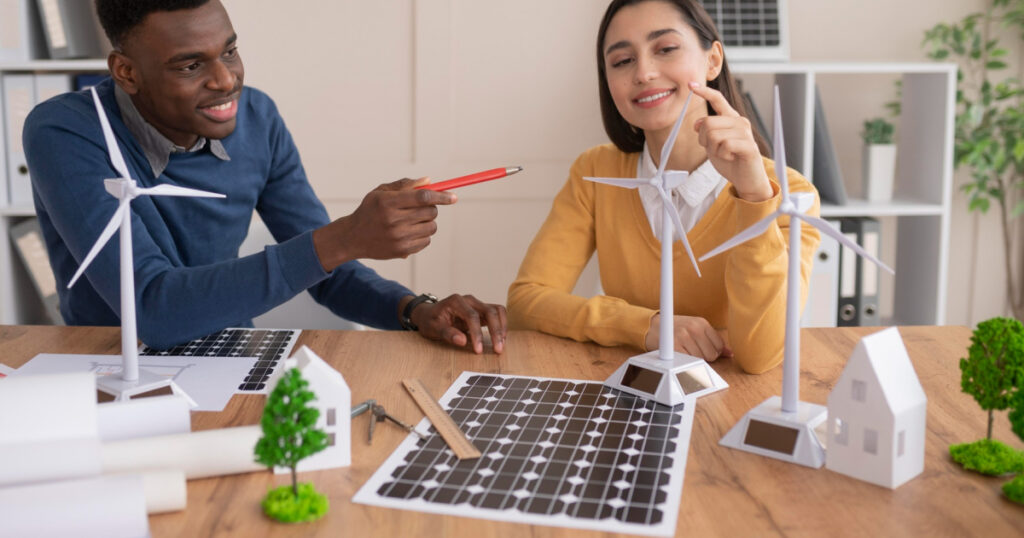The Role of Photovoltaic Cells in Sustainable Energy Solutions
Did you know that photovoltaic cells have the potential to meet up to 40% of global electricity needs by 2030? This incredible statistic underscores the growing importance of solar panels in our quest for sustainable energy solutions.

As we continue to seek cleaner, renewable sources of power, understanding how photovoltaic cells work and their role in solar technology becomes essential. In this guide, we’ll explore the intricacies of photovoltaic cells, their benefits, and how they contribute to a greener, more sustainable future.
What are Photovoltaic Cells?
Photovoltaic cells are the essential components of solar panels that convert sunlight into electricity. These cells are made from semiconductor materials, typically silicon, which generate an electric current when exposed to sunlight.
In addition to generating electricity, photovoltaic systems can be integrated with battery storage solutions to store excess energy during cloudy days or at night.

This ensures a consistent power supply and enhances the overall reliability of the solar system. Regular solar panel service is crucial to maintaining the efficiency and longevity of photovoltaic cells.
How do Photovoltaic Cells Contribute to Sustainable Energy?
Photovoltaic cells play a crucial role in sustainable energy by harnessing sunlight and converting it into clean, renewable electricity. By installing photovoltaic systems, homeowners and businesses can contribute to a greener planet while enjoying the benefits of renewable energy.

The installation process requires specific solar panel installation tools to ensure the system is set up correctly and safely. Residential Solar Panel Installations provide energy independence and add value to properties.
Environmental Benefits of Photovoltaic Cells
The use of photovoltaic cells offers numerous environmental benefits, primarily through the reduction of carbon emissions and pollution. By generating electricity from sunlight, these cells help decrease the dependence on coal, oil, and natural gas, major sources of air and water pollution.

Integrating solar battery storage solutions with photovoltaic systems further enhances their environmental impact. By storing excess energy, these solutions ensure that solar power can be used even when the sun is not shining, reducing the need for backup power from non-renewable sources.
Economic Advantages of Using Photovoltaic Cells
Investing in photovoltaic cells offers significant economic advantages, including long-term savings on energy bills and protection against rising electricity costs. Once installed, solar panels generate free electricity from sunlight, leading to substantial reductions in monthly utility bills.

For businesses, Commercial Solar Installation can lead to even greater financial benefits. By generating their own electricity, companies can lower operational costs, improve their energy independence, and enhance their sustainability credentials.
Technological Innovations in Photovoltaic Cells
Recent technological advancements in photovoltaic cells have significantly improved their efficiency, durability, and versatility. Innovations such as bifacial cells, which capture sunlight from both sides, and tandem cells, which layer different materials to absorb more light, are pushing the boundaries of solar technology.

One exciting development is the integration of photovoltaic cells with other renewable energy systems, such as the solar water heater. By combining solar electricity generation with solar thermal technology, users can maximize their energy savings and reduce their reliance on traditional energy sources.
Integration of Photovoltaic Cells with Other Renewable Energy Sources
Photovoltaic cells can be seamlessly integrated with various other renewable energy sources to create a comprehensive and efficient energy system. For instance, combining solar panels with wind turbines or hydroelectric systems can provide a more stable and reliable power supply.

Another key integration is with the solar inverter, which converts the direct current (DC) electricity generated by photovoltaic cells into alternating current (AC) electricity used by most household appliances.
Final Thought
Choosing the right photovoltaic cells and maintaining them properly are crucial steps in maximizing the benefits of solar energy. Regular maintenance and support ensure that your solar system operates efficiently and lasts for many years. By partnering with a reliable solar installation company like Brightest Homes in Ghana, you can ensure that your system receives the necessary care and attention.
Moreover, investing in ongoing maintenance and support services not only enhances the performance of your solar panels but also provides peace of mind. Knowing that your system is well-maintained allows you to fully enjoy the economic and environmental benefits of solar energy.
FAQs
What materials are used in photovoltaic cells?
Common materials used in photovoltaic cells include silicon (monocrystalline, polycrystalline), cadmium telluride, and copper indium gallium selenide.
How efficient are modern photovoltaic cells?
Modern photovoltaic cells can achieve efficiencies ranging from 15% to over 22%, with ongoing research aiming to improve this further.
Can photovoltaic cells be used in residential settings?
Yes, photovoltaic cells are widely used in residential solar panel installations to provide clean and renewable energy for homes.
What are the environmental benefits of using photovoltaic cells?
Photovoltaic cells reduce carbon emissions, decrease air pollution, and minimize the environmental impact associated with fossil fuel extraction and consumption.
How do photovoltaic cells impact the cost of energy?
While the initial investment can be high, photovoltaic cells reduce long-term energy costs by providing a free and abundant source of electricity from sunlight.
What is the lifespan of photovoltaic cells?
Photovoltaic cells typically have a lifespan of 25 to 30 years, with many panels maintaining significant efficiency even after this period.
How do photovoltaic cells store energy?
Photovoltaic cells do not store energy directly; instead, they can be paired with battery storage solutions to store excess electricity for later use.
What advancements are being made in photovoltaic cell technology?
Advancements include increased efficiency, reduced production costs, the development of flexible and lightweight panels, and integration with other renewable energy technologies.
Are photovoltaic cells reliable in all weather conditions?
Photovoltaic cells can generate electricity in various weather conditions, though their efficiency may decrease on cloudy or rainy days compared to sunny conditions.
How do photovoltaic cells integrate with the existing power grid?
Photovoltaic cells can be connected to the power grid, allowing excess energy to be fed back into the grid, often resulting in credits or payments to the solar panel owner through net metering programs.
